Don Balke (born 1933) is an American artist. He is best known for his watercolor wildlife art and scenic oil paintings. [1]
Don Balke (born 1933) is an American artist. He is best known for his watercolor wildlife art and scenic oil paintings. [1]
Balke, the youngest of ten children, grew up on a farm in northern backcountry of Wisconsin. His family was completely dependent on the land; they tapped trees to make maple syrup; used crosscut saws for logging and horses for their farmwork; they raised crops for themselves and as income.
His upbringing instilled in him a love of nature and wildlife. He received his first art award in a Wisconsin state-sponsored art contest while at elementary school for a painting of a black bear roaming in the woods.
After serving in the US Army, he married Barbara Schernick[ citation needed ] and they moved to Chicago where he enrolled in the Academy of Fine Arts, now known as the School of the Art Institute of Chicago. During his time at the academy, he specialized in still-life paintings. After graduating, he was hired by a Chicago illustrating studio and eventually moved back to Wisconsin where he worked as a commercial art director. He won many awards for his work as an art director and illustrator.[ citation needed ] On his own time, late in the night, he painted and developed his skills as a wildlife artist. After 17 years, he left his work as an art director to devote himself completely to watercolors and wildlife art.
By 1979, they had six children and a home in the village of Thiensville, Wisconsin. Balke's love of nature took him to the NC mountains where he bought 200 acres (0.81 km2) in McDowell County and built a home. In 1985, a gallery was added and the Don Balke Wildlife Gallery was opened. [2]
In 1987, his work was chosen as the illustration for the official NC Zoo poster. [3] In 1992, the United States Post Office issued a series of first-class postage stamps portraying five different species of hummingbirds designed by Balke. [4]
Balke travels to Africa, Australia, Ireland, the Caribbean, and across the 50 United States for inspiration and research. His wife, Barbara Schernick Balke, does extensive research on the animals and their habitats in preparation for the paintings and does much of the photography on research trips.
He is best known for his detailed and realistic watercolor paintings portraying wildlife in their natural environment. In 2000, he transitioned to a more impressionistic style with oils portraying scenes from Yosemite National Park in California, Ocracoke Island on the Outer Banks, and Grandfather Mountain in North Carolina.
During the 1980s, he researched and painted most of the wildlife of the United States and their habitats and produced hundred of paintings in the following series:[ citation needed ]

Watercolor or watercolour, also aquarelle, is a painting method in which the paints are made of pigments suspended in a water-based solution. Watercolor refers to both the medium and the resulting artwork. Aquarelles painted with water-soluble colored ink instead of modern water colors are called aquarellum atramento by experts. However, this term has now tended to pass out of use.

Georgia Totto O'Keeffe was an American modernist artist. She was known for her paintings of enlarged flowers, New York skyscrapers, and New Mexico landscapes. O'Keeffe has been called the "Mother of American modernism".
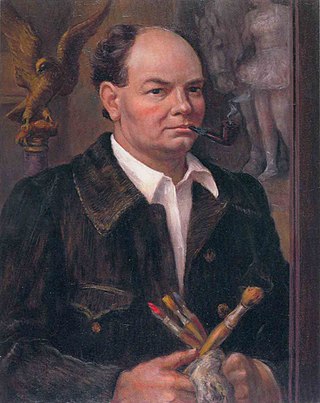
John Steuart Curry was an American painter whose career spanned the years from 1924 until his death. He was noted for his paintings depicting rural life in his home state, Kansas. Along with Thomas Hart Benton and Grant Wood, he was hailed as one of the three great painters of American Regionalism of the first half of the twentieth century. Curry's artistic production was varied, including paintings, book illustrations, prints, and posters.
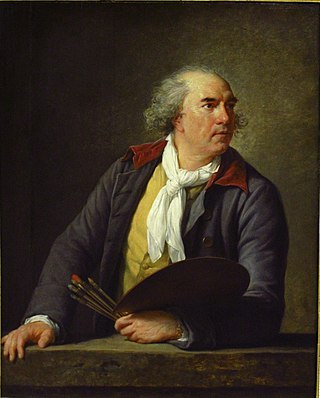
Hubert Robert was a French painter in the school of Romanticism, noted especially for his landscape paintings and capricci, or semi-fictitious picturesque depictions of ruins in Italy and of France.

Martin Johnson Heade was an American painter known for his salt marsh landscapes, seascapes, and depictions of tropical birds, as well as lotus blossoms and other still lifes. His painting style and subject matter, while derived from the romanticism of the time, are regarded by art historians as a significant departure from those of his peers.
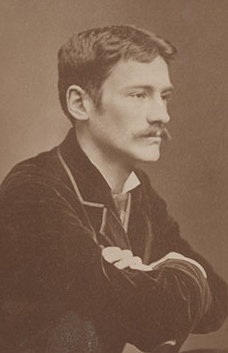
Thomas Wilmer Dewing was an American painter working at the turn of the 20th century. Schooled in Paris, Dewing was noted for his figure paintings of aristocratic women. He was a founding member of the Ten American Painters and taught at the Art Students League of New York. The Freer Gallery of Art at the Smithsonian Institution has a collection of his works. He was the husband of fellow artist Maria Oakey Dewing.

Frank Weston Benson, frequently referred to as Frank W. Benson, was an American artist from Salem, Massachusetts known for his Realistic portraits, American Impressionist paintings, watercolors and etchings. He began his career painting portraits of distinguished families and murals for the Library of Congress. Some of his best known paintings depict his daughters outdoors at Benson's summer home, Wooster Farm, on the island of North Haven, Maine. He also produced numerous oil, wash and watercolor paintings and etchings of wildfowl and landscapes.

Peder Balke was a Norwegian painter. He is known for portraying the landscape of Norway in a romantic and dramatic manner.

Millard Owen Sheets was an American artist, teacher, and architectural designer. He was one of the earliest of the California Scene Painting artists and helped define the art movement. Many of his large-scale building-mounted mosaics from the mid-20th century are still extant in Southern California. His paintings are in the Metropolitan Museum of Art and the Whitney Museum in New York, the Chicago Art Institute, the National Gallery in Washington D.C.; and the Los Angeles County Museum.
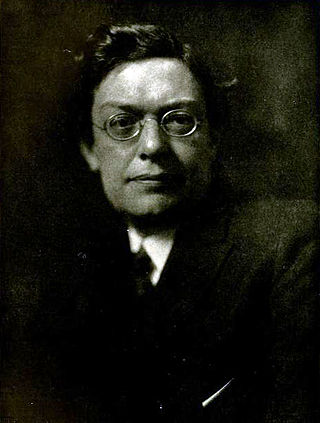
Charles Robert Knight was an American wildlife and paleoartist best known for his detailed paintings of dinosaurs and other prehistoric animals. His works have been reproduced in many books and are currently on display at several major museums in the United States. One of his most famous works is a mural of Tyrannosaurus and Triceratops, which helped establish the two dinosaurs as "mortal enemies" in popular culture. Working at a time when many fossil discoveries were fragmentary and dinosaur anatomy was not well understood, many of his illustrations have later been shown to be incorrect representations. Nevertheless, he has been hailed as "one of the great popularizers of the prehistoric past".
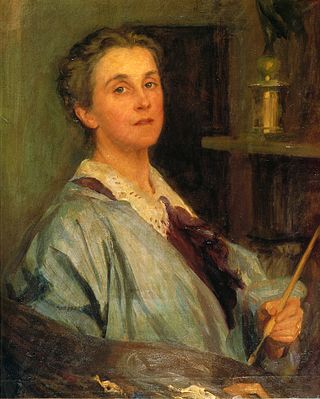
Lydia Field Emmet was an American artist best known for her work as a portraitist. She studied with, among others, prominent artists such as William Merritt Chase, Harry Siddons Mowbray, Kenyon Cox and Tony Robert-Fleury. Emmet exhibited widely during her career, and her paintings can now be found hanging in the White House, and many prestigious art galleries, including the Metropolitan Museum of Art.

Colin Campbell Cooper, Jr. was an American impressionist painter of architectural paintings, especially of skyscrapers in New York City, Philadelphia, and Chicago. An avid traveler, he was also known for his paintings of European and Asian landmarks, as well as natural landscapes, portraits, florals, and interiors. In addition to being a painter, he was also a teacher and writer. His first wife, Emma Lampert Cooper, was also a highly regarded painter.
Terry Isaac was an American painter from Salem, Oregon who was known for his realism paintings of wildlife. In 2007, he moved to Canada.
Gladys M. Nilsson is an American artist, and one of the original Hairy Who Chicago Imagists, a group of representational artists active during the 1960s and 1970s. She is married to fellow-artist and Hairy Who member Jim Nutt.
Ogden Minton Pleissner (1905–1983) was an American painter, specializing in landscapes and war art related to his service in World War II.
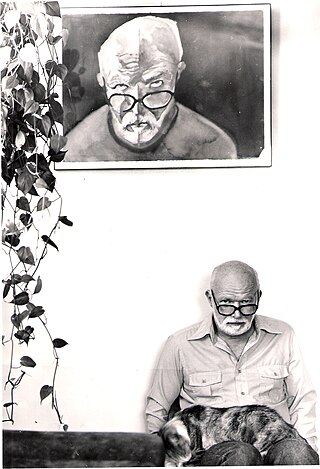
Keith Crown was an American abstract painter and Professor of Art at the University of Southern California, best known for his vibrant, expressive watercolors of the American southwest.
Martha Nilsson Edelheit, also known as Martha Ross Edelheit, is an American-born artist currently living in Sweden. She is known for her feminist art of the 1960s and 1970s, which focuses on erotic nudes.
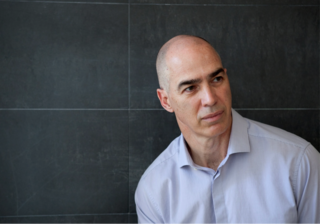
David Klamen is an American artist and academic. He is known for visually diverse paintings that meld technical mastery with postmodern explorations of the processes by which humans understand and interpret experience. Klamen has exhibited across the United States, Europe and Asia, including individual shows at the Museum of Contemporary Art Chicago (MCA), the Chazen Museum of Art and the Cedar Rapids Museum of Art, and major group exhibitions at the Metropolitan Museum of Art, the Art Institute of Chicago, the Museum of Contemporary Art, San Diego, the Indianapolis Museum of Art, and the Crocker Art Museum. His work sits in the permanent collections of the Metropolitan Museum of Art, the Los Angeles Museum of Contemporary Art and the Whitney Museum of American Art, among others. Klamen has been based in Chicago for most of his career, which includes being an educator for over thirty years, primarily at Indiana University Northwest, where he was appointed Founding Dean, School of the Arts in 2018.
Else Winkler von Röder (Roeder) Bostelmann (1882-1961), a German-born American artist, joined the New York Zoological Society in 1929 to paint marine life during William Beebe's bathysphere oceanographic expeditions at Bermuda's Nonsuch Island (1930-1934).

Martha Nessler Hayden is an American artist, known for Modernist landscape painting and artist books. Hayden lives and works in Sharon, Wisconsin, in a historic Victorian home.